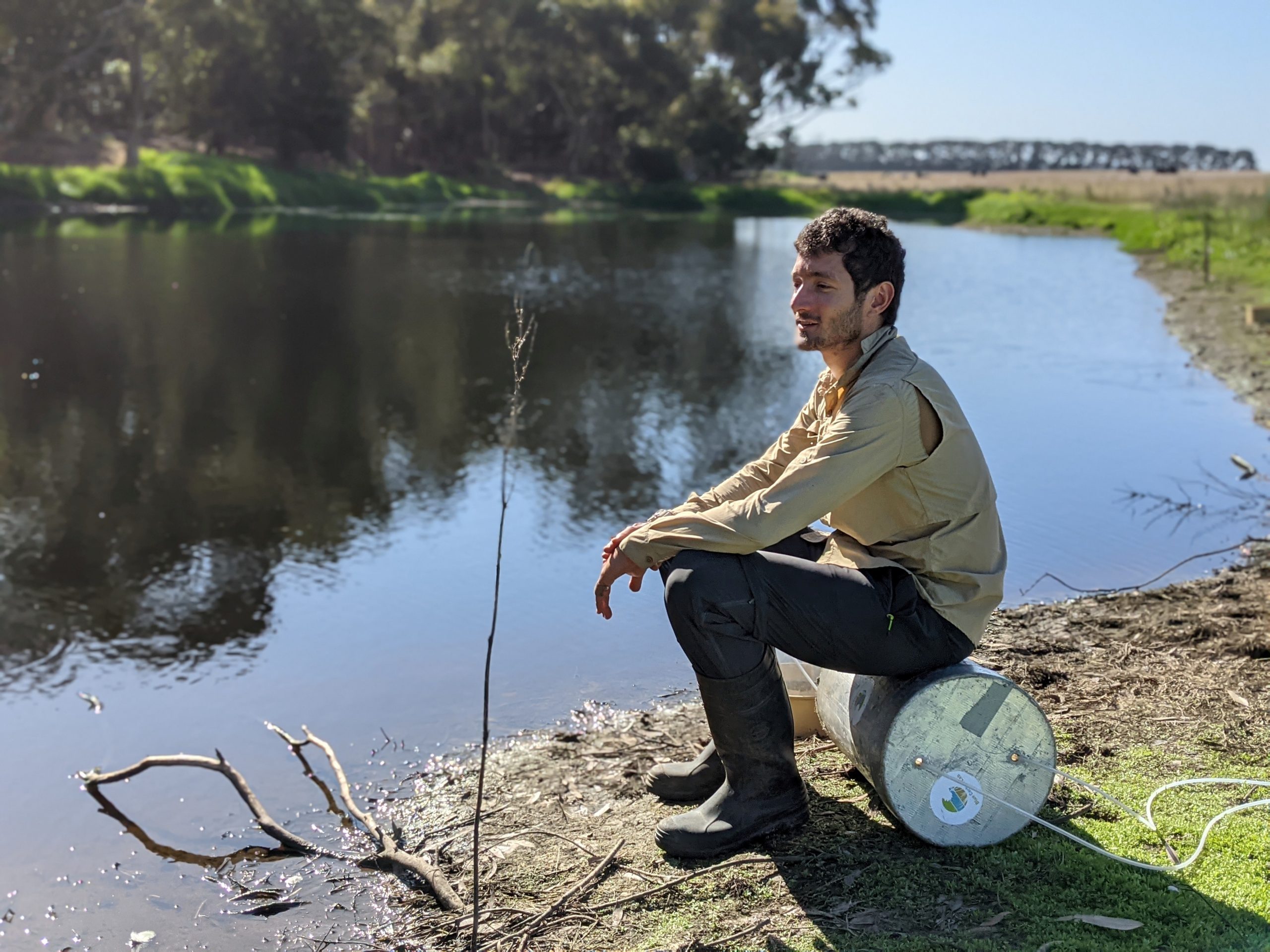Dr Martino Malerba
ARC DECRA Fellow
Deakin Marine Research and Innovation Centre
Deakin University, Burwood campus
221 Burwood Hwy, VIC 3125

Martino's research
Martino leads the Teal Carbon group at Deakin’s Blue Carbon Lab. He is an environmental scientist, ecologist, and evolutionary biologist whose research focuses on freshwater wetlands.
Equivalent to coastal wetlands, teal carbon ecosystems are key to regulating greenhouse gases and mitigating the effects of climate change. However, their degradation due to land-use change, pollution, water extraction, and landscape modification can release large amounts of carbon back into the atmosphere.
For example, farm dams are among the highest greenhouse gas emitters of all freshwater ecosystems. Yet, simple management interventions (such as using fences to exclude livestock) can change these systems from a source of pollution (carbon sources) to becoming part of the solution (carbon sinks).
Dr Malerba’s research team works to quantify carbon emissions, restores degraded sites, explores strategies for greener practices, identifies social drivers of sustainable development, and explores financial mechanisms for better management of freshwater resources.
His research is supported by the Australian Research Council through a DECRA Fellowship. He collaborates with the Australian National Carbon Inventory team to improve our estimates of carbon emissions from freshwater systems, and with the Clean Energy Regulator to develop new methodologies for financial incentives (carbon credits).
Keywords
Farm Dams, Teal Carbon, remote sensing, ecological modelling, greenhouse gases, ecoevolutionary dynamics, body size
Career Highlights
- ARC DECRA (2022-2025)
- Alfred Deakin Postdoctoral Research Fellow (2020-ongoing)
- Monash University Fellowship (2016-2020)
- PhD, James Cook University (2012-2015)
- BSc (Honours) Marine Biology, James Cook University (2010-2011)
- BSc Marine Biology Adv., James Cook University (2007-2009)
Selected publications
Malerba, M. E., Friess, D. A., Peacock, M., Grinham, A., Taillardat, P., Rosentreter, J. A., … & Macreadie, P. I. (2022). Methane and nitrous oxide emissions complicate the climate benefits of teal and blue carbon wetlands. One Earth, 5(12), 1336-1341.
Malerba, M. E., de Kluyver, T., Wright, N., Schuster, L., & Macreadie, P. I. (2022). Methane emissions from agricultural ponds are underestimated in national greenhouse gas inventories. Communications Earth & Environment, 3(1), 1-7.
Malerba, M. E., Lindenmayer, D. B., Scheele, B. C., Waryszak, P., Yilmaz, I. N., Schuster, L., & Macreadie, P. I. (2022). Fencing farm dams to exclude livestock halves methane emissions and improves water quality. Global Change Biology.
Malerba, M. E., Wright, N. & Macreadie, P. 2022. Australian farm dams are becoming less reliable water sources under climate change. Remote Sensing
Malerba, M. E., Wright, N. & Macreadie, P. 2021. A Continental-Scale Assessment of Density, Size, Distribution and Historical Trends of Farm Dams Using Deep Learning Convolutional Neural Networks. Remote Sensing
Malerba, M. E., White, C. R. & Marshall, D. J. 2019. The outsized trophic footprint of marine urbanization. Front Ecol Environ
Malerba, M. E., Marshall, D. J., Palacios, M. M., Raven, J. A., Beardall. 2021. Cell size influences inorganic carbon acquisition in artificially selected phytoplankton. J. New Phytologist
Malerba, M. E., Palacios, M. M., Palacios Delgado, Y. M., Beardall, J., Marshall, D. J. 2018. Cell size, photosynthesis and the package effect: an artificial selection approach. New Phytologist
Malerba, M. E., Ghedini, G. & Marshall, D. J. 2020. Genome size affects fitness in the eukaryotic alga Dunaliella tertiolecta. Current Biology.
Malerba, M. E. & Marshall, D. J. 2019. Size-abundance rules? Evolution changes scaling relationships between size, metabolism and demography. Ecology Letters.
Malerba, M. E., White, C. R. & Marshall, D. J. Eco-energetic consequences of evolutionary shifts in body size. Ecology Letters.

Selected media
Presentation: Landcare South Gippsland 2022 (21 min | May 2022)
Article: Aussie farm dams help cut greenhouse gases (7 News, Australia | January 2022)
Presentation: Zero Emissions Farming Conference 2021 (14 min | November 2021)
Presentation: Deakin Centre for Integrative Ecology on Farm Dams (23 min | November 2021)
